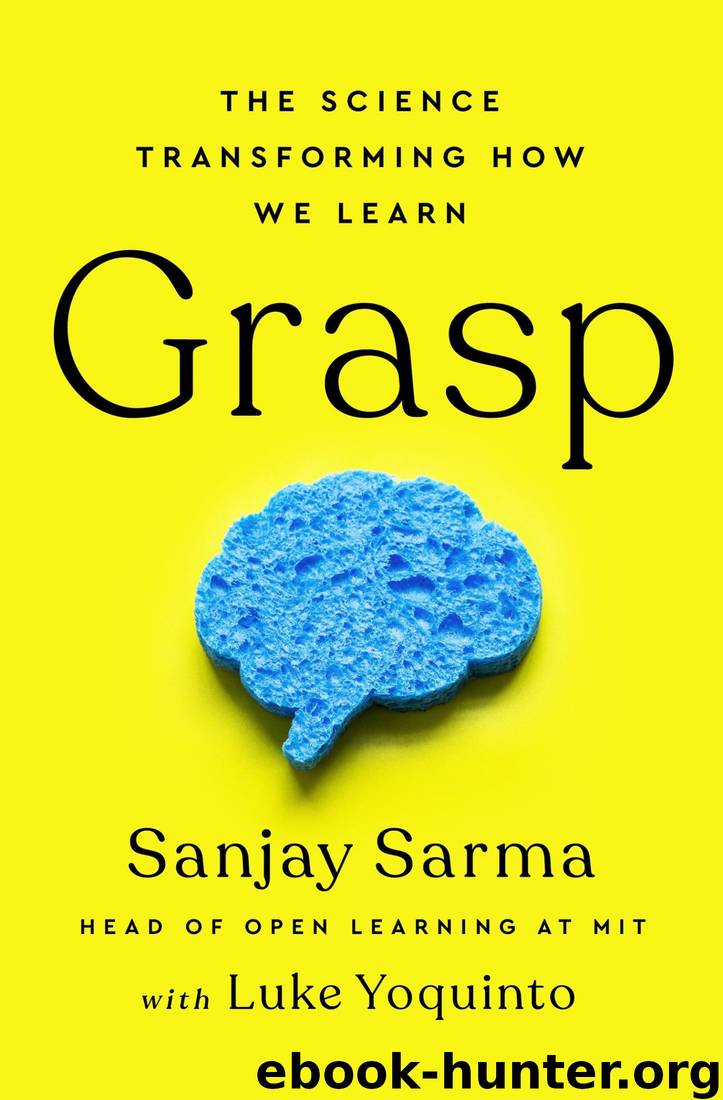Grasp: The Science Transforming How We Learn by Sanjay Sarma

Author:Sanjay Sarma
Language: eng
Format: epub
Publisher: Doubleday
Published: 2020-08-17T23:00:00+00:00
* * *
—
In fact, there’s quite a bit that an enterprising reformer can pull off, even while confined by traditional educational structures. Part of what makes the Florida International University College of Law story so remarkable, for instance, is that it achieved its profound reversal within the familiar trappings of law school education: pontificating professors, semicircular lecture halls, final exams, and so on.
MIT, too, has tested how much instructional change the larger academic superstructure will tolerate. Fittingly, a literal space explorer is responsible for the Institute’s initial giant steps down this path. John Belcher was part of the team that built the plasma-detection instruments on the Voyager 1 and Voyager 2 spacecrafts and, during their flybys of Jupiter, Saturn, Uranus, and Neptune in the 1980s, served as those instruments’ principal investigator. Today, he spends much of his time poring over the data now returning from the probes as they venture into interstellar space. In between then and now, however, he turned his gaze to the challenges of physics education—which, as lead lecturer for MIT’s largest course, Physics II, he found he couldn’t ignore.
At a conference of physics educators in 1996, Belcher encountered several different tactics for improving on the standard lecture-and-recitation model. Like so many other frustrated physics professors, he had observed that even top-tier students, even after extensive physics coursework, still tended to come up with intuitive but wrong answers to physics questions. The problem, he was told by scholars who had studied their Piaget, had to do with the sorts of explanations that students construct early in childhood for how the physical world works. Upon encountering natural phenomena like momentum, friction, and weight, children readily form personal theories that are correct enough to serve their purposes in daily life, but fail to hold up in the physics classroom. Correcting such misconceptions required a deep remodeling of very old schemata, densely interconnected with memories acquired over the course of more than a decade. Such deeply held rules couldn’t merely be reasoned away in the space of a lecture. No, they needed to be eradicated roots to branches—an approach, he was surprised to hear, few instructors had tried.
Already, however, that was beginning to change. Up the river at Harvard, the physicist Eric Mazur had begun experimenting with the first of two major innovations he would contribute to classroom practice around the world. In his system of “Peer Instruction,” as he named it, he encouraged students to explain confusing physics concepts to each other. “You’re a student and you’ve only recently learned this, so you still know where you got hung up,” he later recalled. “Whereas Professor Mazur got hung up on this point when he was seventeen, and he no longer remembers how difficult it was back then.”
Peer learning acted sort of like a time travel device: allowing professors to climb down one student’s schematic tree to meet other students at their level. There was a problem, however: Although the physical shape of traditional lecture halls exposed all students to equal quantities of professorial wisdom, it prevented them from easily speaking to one another.
Download
This site does not store any files on its server. We only index and link to content provided by other sites. Please contact the content providers to delete copyright contents if any and email us, we'll remove relevant links or contents immediately.
Sapiens: A Brief History of Humankind by Yuval Noah Harari(14144)
Sapiens by Yuval Noah Harari(5252)
Pale Blue Dot by Carl Sagan(4846)
Homo Deus: A Brief History of Tomorrow by Yuval Noah Harari(4763)
Livewired by David Eagleman(3610)
Origin Story: A Big History of Everything by David Christian(3581)
Brief Answers to the Big Questions by Stephen Hawking(3301)
Inferior by Angela Saini(3198)
Origin Story by David Christian(3110)
The Gene: An Intimate History by Siddhartha Mukherjee(3002)
Signature in the Cell: DNA and the Evidence for Intelligent Design by Stephen C. Meyer(2988)
The Evolution of Beauty by Richard O. Prum(2898)
Aliens by Jim Al-Khalili(2753)
How The Mind Works by Steven Pinker(2682)
A Short History of Nearly Everything by Bryson Bill(2566)
Sex at Dawn: The Prehistoric Origins of Modern Sexuality by Ryan Christopher(2433)
From Bacteria to Bach and Back by Daniel C. Dennett(2416)
Endless Forms Most Beautiful by Sean B. Carroll(2389)
Who We Are and How We Got Here by David Reich(2365)
